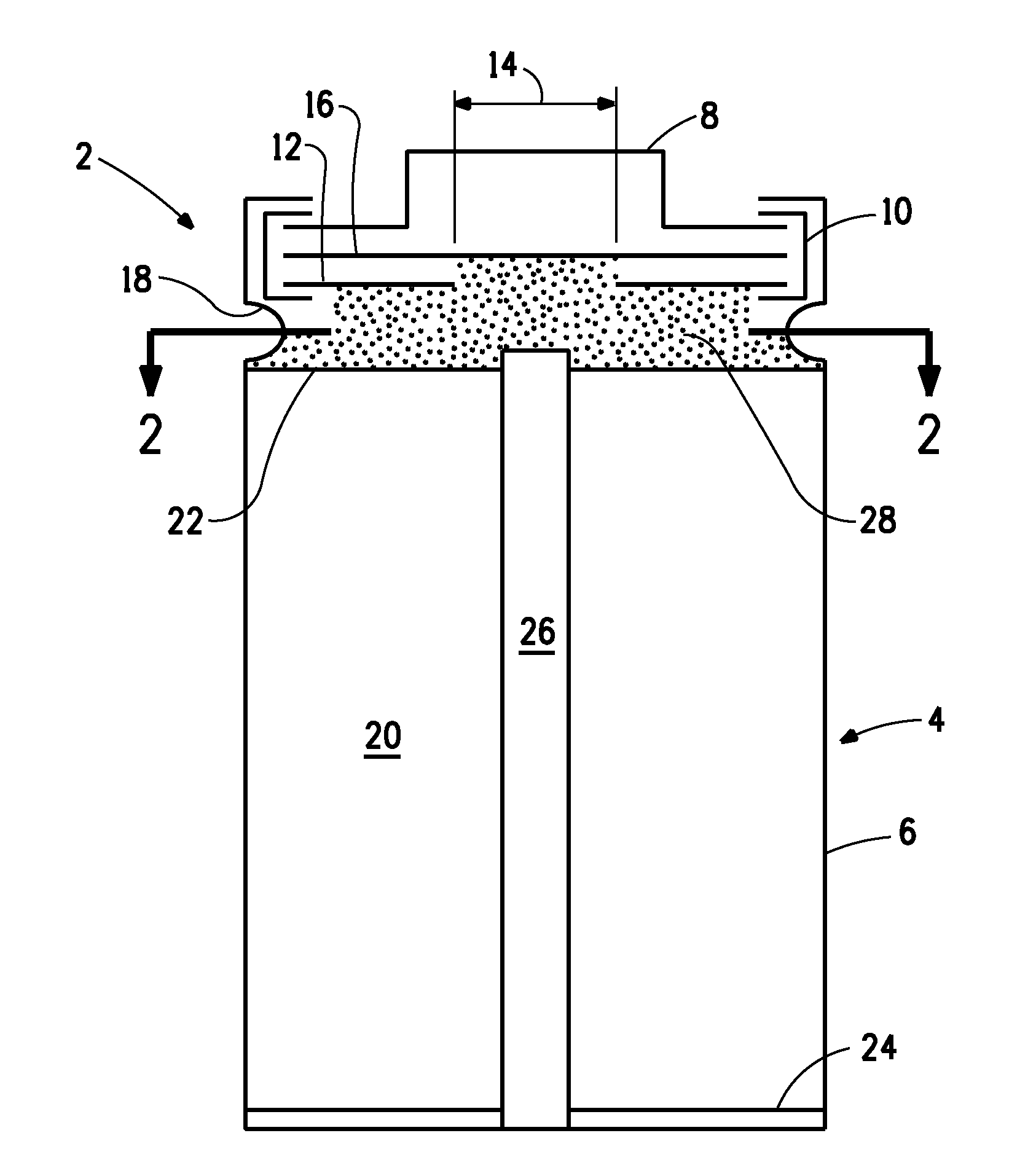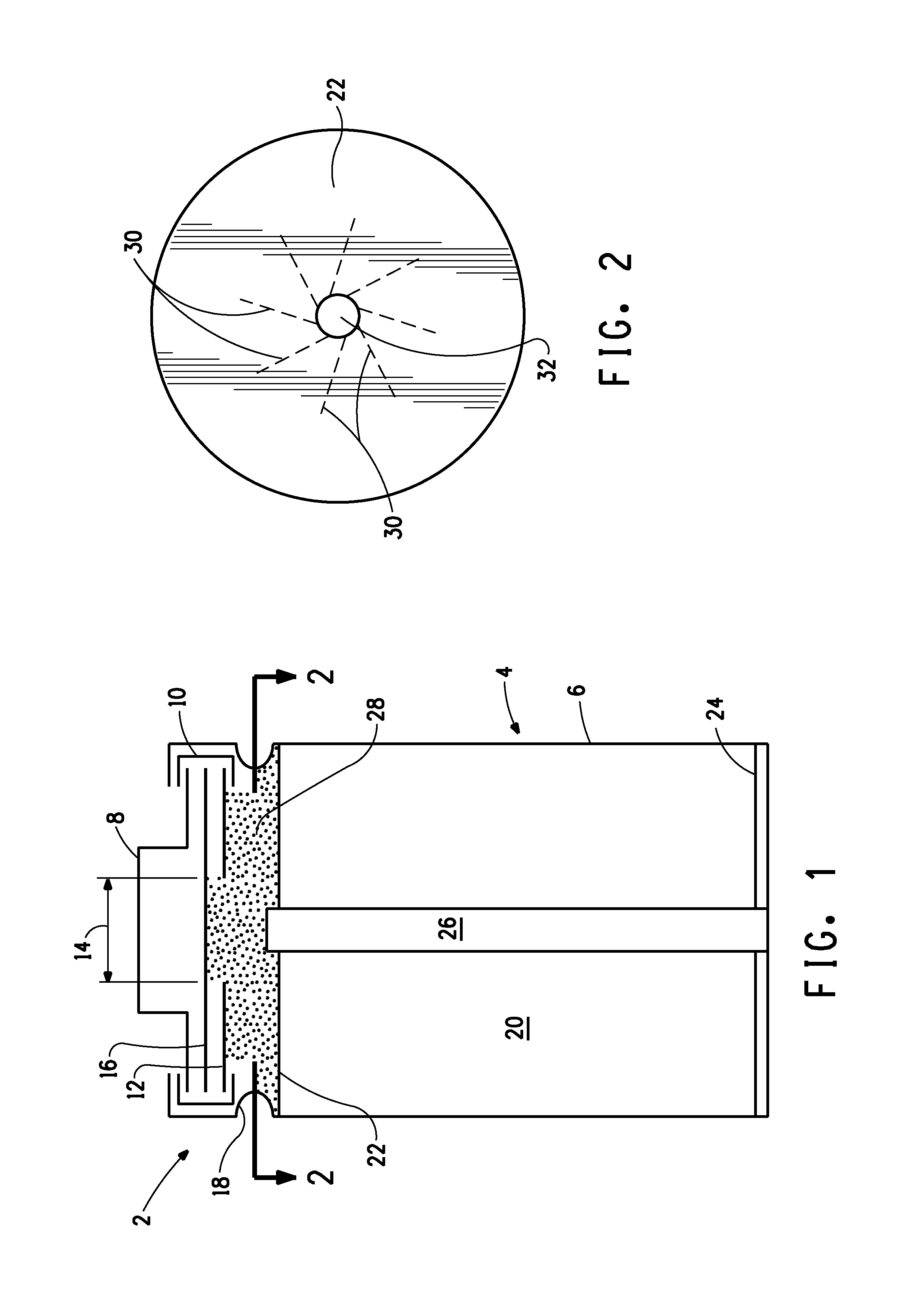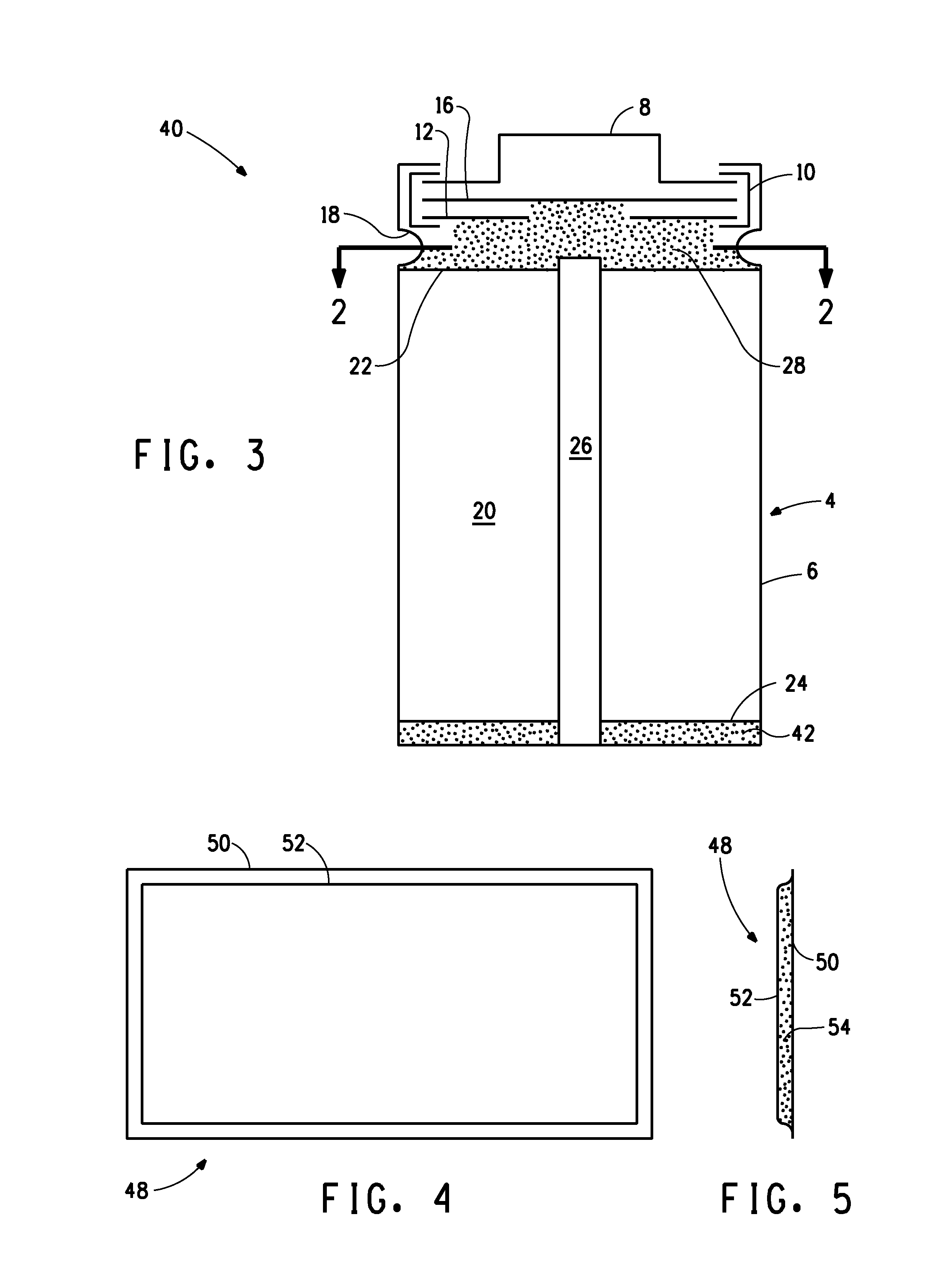Li-ion battery having improved safety against combustion
- Summary
- Abstract
- Description
- Claims
- Application Information
AI Technical Summary
Benefits of technology
Problems solved by technology
Method used
Image
Examples
example 1
[0095]The cathode electrode for the lithium cylindrical cell was fabricated from a mixture of LiMn0.33Ni0.33Co0.33O2 electrode powder, polyvinylidene difluoride (PVDF) polymer binder, and graphite slurried in 1-methyl-2-pyrrolidinone (NMP). The anode electrode was fabricated from graphite, PVDF and NMP. The cathode electrode was cast from the slurry onto an aluminum current collector foil and on a copper current collector foil for anode electrode. The electrolyte was 1 M LiPF6 in ethylene carbonate (EC):diethyl carbonate (DEC). A polypropylene separator was used in the process to wind a battery cell core. The wound core elements (jelly roll) were inserted in a metal can depicted in FIG. 1, closed and sealed. The metal can assembly as depicted in FIG. 1 has a steel can 6 and a steel battery top 8, which is the positive pole of the battery. The can 6 is the negative pole of the battery. The two poles are insulated from one another by a u-shaped polymer insulator ring 10 positioned bet...
example 2
[0098]The wound core elements (jelly roll) were identical to EXAMPLE 1. The wound core elements (jelly roll) were inserted in a metal can depicted in FIG. 1, closed and sealed. The metal can assembly as depicted in FIG. 1 has a steel can 6 and a steel battery top 8, which is the positive pole of the battery. The can 6 is the negative pole of the battery. The two poles are insulated from one another by a u-shaped polymer insulator ring 10 positioned between the positive and negative poles where proximate to one another. Positioned within the u-shape of the insulator ring 10 are a disc 12 having an aperture 14 therewithin and a scored polyamide rupture disc 16 forming a closure of aperture 14, all pressed together by the crimp 18 encircling the can 6 as shown. The wound core elements (region of electrochemical activity 20) within the battery sits inside insulated sides of the can 6 and sheet insulators 22 and 24 covering the top and bottom, respectively, of the wound core elements. A ...
example 3
[0100]The wound core elements (jelly roll) were identical to EXAMPLE 1. The wound core elements (jelly roll) were inserted in a metal can depicted in FIG. 3 with the exception that chamber 28 was empty and did not contain any combustion abatement agent, closed and sealed. The combustion abatement agent is located only in chamber 42. The metal can assembly as depicted in FIG. 3 has a steel can 6 and a steel battery top 8, which is the positive pole of the battery. The can 6 is the negative pole of the battery. The two poles are insulated from one another by a u-shaped polymer insulator ring 10 positioned between the positive and negative poles where proximate to one another. Positioned within the u-shape of the insulator ring 10 are a disc 12 having an aperture 14 therewithin and a scored polyamide rupture disc 16 forming a closure of aperture 14, all pressed together by the crimp 18 encircling the can 6 as shown. The wound core elements (region of electrochemical activity 20) within...
PUM
 Login to View More
Login to View More Abstract
Description
Claims
Application Information
 Login to View More
Login to View More - R&D
- Intellectual Property
- Life Sciences
- Materials
- Tech Scout
- Unparalleled Data Quality
- Higher Quality Content
- 60% Fewer Hallucinations
Browse by: Latest US Patents, China's latest patents, Technical Efficacy Thesaurus, Application Domain, Technology Topic, Popular Technical Reports.
© 2025 PatSnap. All rights reserved.Legal|Privacy policy|Modern Slavery Act Transparency Statement|Sitemap|About US| Contact US: help@patsnap.com



